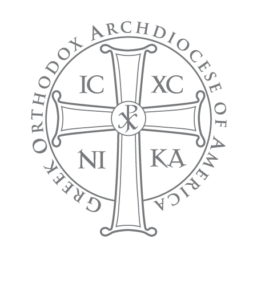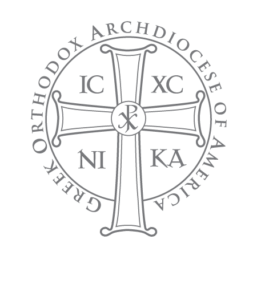by Rev. Father Aris Metrakos
Pastor of Holy Trinity Greek Orthodox Church in San Francisco, California
It’s hard to think about the Panagia1 (Virgin Mary) without becoming reflective. Maybe it’s the sweet face depicted on icons, or remembering the first time chanting the “Aspile”2 or the “Kai dos imin”2 in front of the congregation. For the Orthodox Christian, the Theotokos3 and the “warm and fuzzies” go together
Last Friday the Church chanted the Akathist to the Virgin Mary. In some Orthodox traditions, parts of this service had already been sung and read on the preceding four Fridays. In many ways, this venerable service which mixes together communal prayers, chanting by individuals, choral responses, and priestly intonations epitomizes Orthodox Christian worship.
At the parish which I serve, the choir, congregation, and clergy prayed the Akathist with piety, dignity, and beauty. Only one thing was missing: congregants. On one of the most traditional services of Great Lent, the church was largely empty. After speaking with other parish priests, it seems that this less than exuberant turnout for the Panagia was not unique.
At the risk of sounding like every other good-old-days-recalling middle-aged person who has ever lived might I say: “It didn’t used to be this way.” My wife and I remember worshiping together before we were married and as young newlyweds at churches that were consistently one-third to one-half full on the Friday evenings of Great Lent. Both of us agree that over the past quarter century participation at the Salutations Service has dwindled steadily.
What’s changed? I remember the chanting of the “good-old-days” and in all objectivity today’s church music is generally better. Our choirs are well-prepared. Our clergy are faithful. My fear is that as a Church, American Orthodox Christians are drifting away from the Theotokos.
Why the Panagia is Loved
Orthodox apologists can draw on Biblical texts and extra-Biblical sources to “justify” to outsiders the veneration of the Virgin Mary, but this approach always fall short of the mark. The emotions that are evoked when we sing together “Ti Ypermacho”4 and “Tin Oreotita”4 aren’t borne out of Biblical proof texts. The awe and tenderness that fill our hearts at that moment come from the recollection of the way that she has answered our prayers.
For two millennia the Theotokos has listened to the prayers of the faithful. That’s why people turn to her in times of distress. They know she hears us and will intercede for us with her Son.
Intercessory prayer can be a stroll on thin ice in the dialog between Orthodoxy and the world, but it’s easy enough to explain. If I ask you to pray for me for this or that reason, why would I think that your prayers would be anything but more powerful when you pass from this life to the next! Fallen humanity is selfish and self-serving. We do those things that have a “pay-off.” Faithful persons in times of distress cry out to the Panagia for only one reason: Intercessory prayer works.
Losing Touch with the Panagia
So why have many American Orthodox drifted away from Mary? Does this estrangement result from the influence of our heterodox brethren? Do we identify her with the Old World? I think we are no longer close to the Theotokos because we no longer understand the power of the Faith of the Orthodox. We need to pray expecting results.
In our rational and often lukewarm approach to piety we might pray because “we’re supposed to,” or to make ourselves “feel good,” but how many of us expect to change things when we pray? God answers prayers in His time and in His way, and, yes, some of our prayers are trivial — to date no prayer to stop male-pattern baldness has been answered. But there is no doubt that in times of real need, our prayers are answered in profound and magnificent ways. Very often these answered pleas were made through the intercessions of the Theotokos.
In times of distress and brokenness we need to be less clever and more humble.
Our lack of a reliance on the Panagia comes also from our self-reliance. In our affluent, comfortable I Did It My Way society, the notion of relying totally on God is essentially foreign. When we get in jam, we trust only in our own wits, will, and wisdom. The notion of being on one’s knees, sobbing and pouring out one’s heart to the Almighty runs counter to the American spirit, but it opens our hearts to the Holy Spirit. In those moments, like a drowning person reaching out his hands for a line tossed from a passing ship we exclaim “Most Holy Theotokos, save us.”
Mary is for the Faithful
Akathists and Supplications to the Panagia are not mission services. If you know someone interested in Orthodoxy, invite him to Divine Liturgy or a catechism class. The veneration of Mary belongs to those persons who have internalized the message of Apostolic Christianity. This is not a call for the Orthodox to become modern day Gnostics or Corinthians, but rather to rediscover the essence of the Faith. To be an Orthodox Christians means to live with the promise of being able to live in communion with the Lord; to open the eyes of our heart so that we might experience tangibly His presence; to become “dead to sin and alive in Christ Jesus” not because we are adherents to some philosophical system, but because we are His sons and daughters.
Why the World Needs the Panagia
Can anyone imagine standing before an icon of the Theotokos and Christ and being “pro-choice?” Is it possible to read the account of the Nativity and not be determined to be the best parent and spouse that you can be? When your business is tanking, will you still cheat your creditors when you are uttering the words “Most Holy Theotokos, save us?” Can there be any more powerful counter to the specious allegation that Orthodoxy and male chauvinism are one and the same thing, than the love we have for the New Eve?
The World (and the Church) Apart from the Panagia
Turning our back on the Panagia comes with consequences. With this attitude comes a reason bound faith that can define “hypostasis” but never know the meaning of love. Without traditional piety we become convinced that Jesus told us a lot of good things about how we should live, while doubting that He has the power to change our lives.
Some Rebuttals to Those Among Us Who are Uncomfortable with Mary
Some modern Orthodox Christians don’t like the words “Most Holy Theotokos, Save Us.” They would prefer the words “intercede for us,” reminding us that the exclamation “Save Us” is confusing to non-Orthodox. The veneration of Mary is not for the non-Orthodox. Once people have been fully converted to Christ, the love of the Panagia follows naturally. The pious believer knows firsthand that Jesus is his Savior, but the drowning man does not cry out to the lifeguard, “Intercede for me!”
Others among us who have been influenced by anthropology, sociology, evolutionary psychology, and the like tell us that lots of pagan cultures and belief systems have a “Mary-like” figure. That’s no surprise. The Orthodox have always known about the Seminal Word — the notion that, since all humans are made “in the image and likeness” of the same God, there would be an overlap in the religious beliefs of various cultures. Jesus Christ and His Church, the Orthodox continue, are a fulfillment of the traces of the Seminal Word deposited among all peoples. The myths associated with the “Mary-like” components of pagan beliefs are like stepping stones leading the way to the events of the Panagia’s life and her continued intercessions on our behalf.
All is Not Lost
Last August 14 and 15, I had the privilege of serving at a monastery in Transylvania that is home to a wonderworking icon of the Panagia. Almost 200,000 pilgrims (many of whom had traveled days on foot to be there) spent two days venerating this icon and literally singing the praises of the Theotokos. In their contrition, may of the faithful crawled around the monastery chapel on their hands and knees. At the conclusion of the vigil on the eve of the Dormition, four monk priests placed the icon on a bier which was then hoisted on their shoulders. A procession of clergy paraded the icon three times around the church as 196,000 persons sang popular folk songs to the Panagia while waving huge boughs of basil. Only police and riot gates kept the exuberance from becoming absolute pandemonium.
Why is it that the number of people gathered in one spot in Romania to commemorate the Dormition exceeded the sum total of every American Orthodox Sunday morning congregation? Are we more sophisticated? Do we have better cable channels? My suspicion is that the hardships resulting from centuries of imperial oppression, the pain of a half-century of one of the most oppressive Communist regimes, and the fears stemming from today’s economic uncertainties have cemented within the hearts of the Romanian people a dedication to one who is the Joy to All who Sorrow.
Finally, please don’t think that I am advocating simply for better attendance at Salutations or Parakelsis services. Instead, I am calling for a radical “Back to the Future” overhaul of American Orthodox piety that leads us to a future illumined and shaped by the power of intercessory prayer to the Panagia. To those American Orthodox Christians who adore the Virgin Mary, please pray that she will intercede in the hearts of all who have grown cold to her, so that the faithful of the New World might not abandon the Theotokos. To be sure, she has never abandoned us.
1 Panagia is a name given to the Virgin Mary in Orthodox Christian circles, meaning “All-Holy”.
2 Refers to prayers read during the Salutations (Paraklesis in Greek) services in which the Virgin Mary is honored.
3 Theotokos is the Greek term given by the Council of Ephesus (431) which names the Virgin Mary and means the one who bore (or gave birth) to God. All the names applied to the Theotokos are Christological and confirm that the Jesus born of her is indeed the Son of God.
4 Hymns in honor of the Theotokos.


